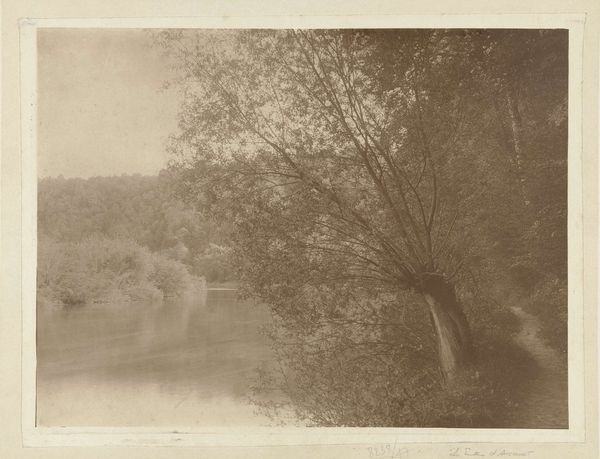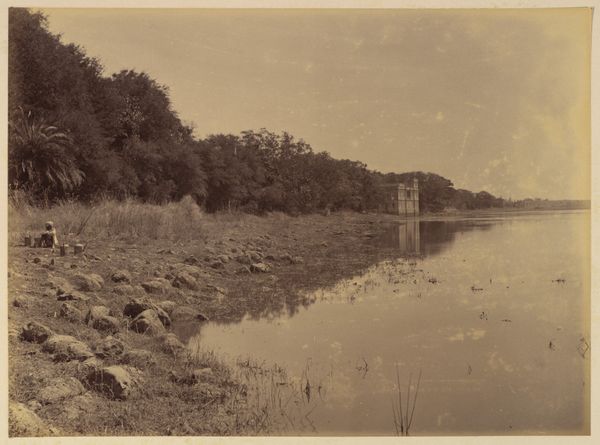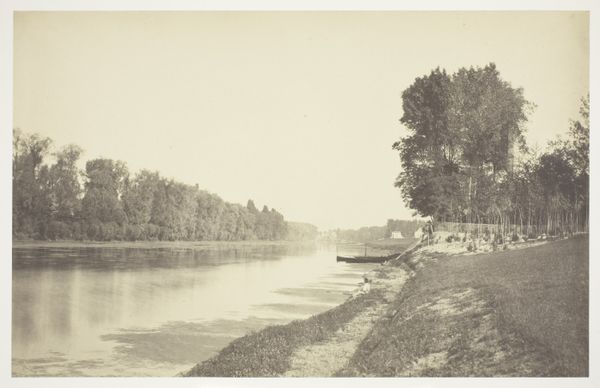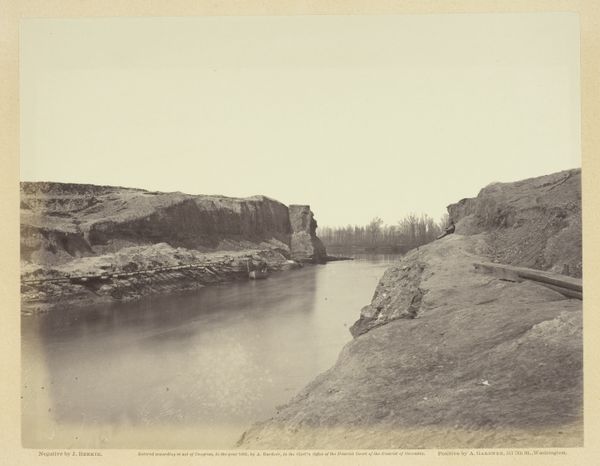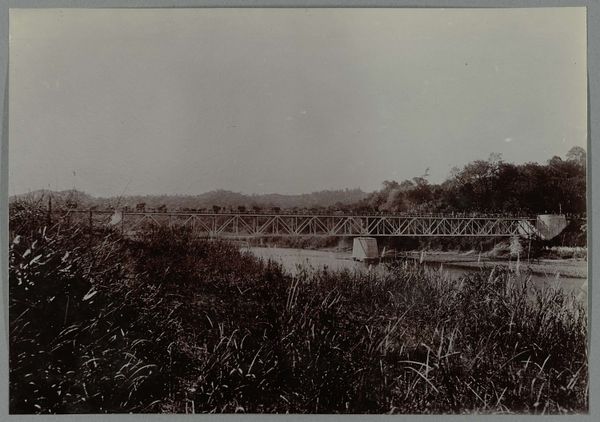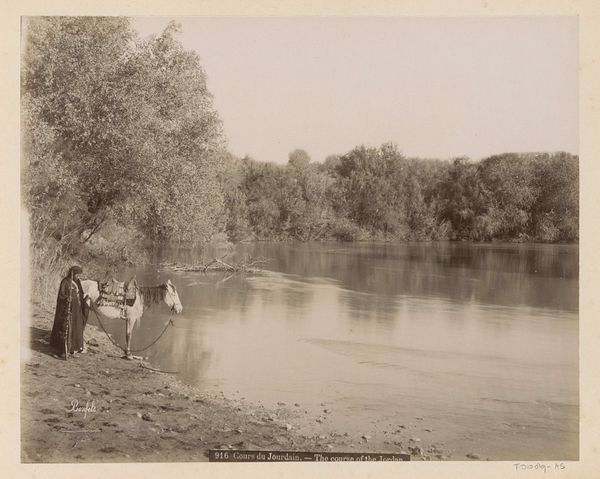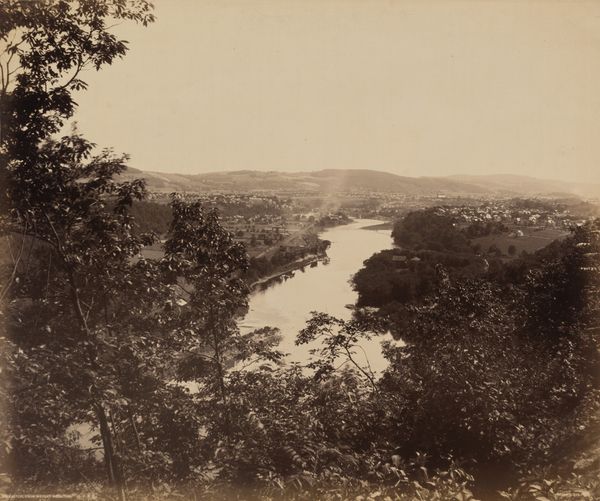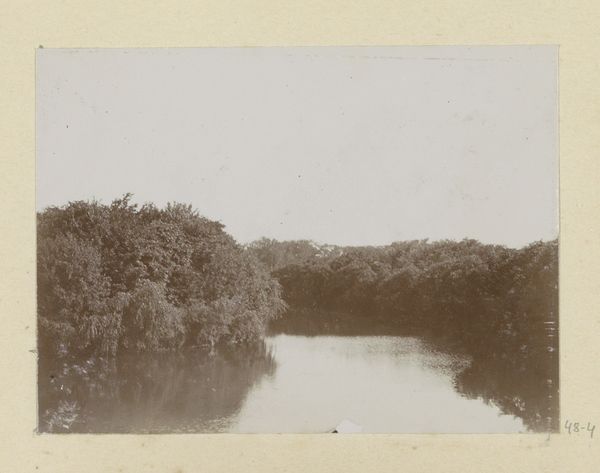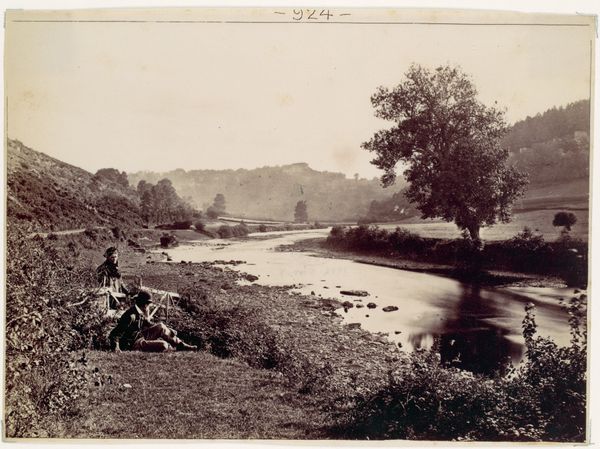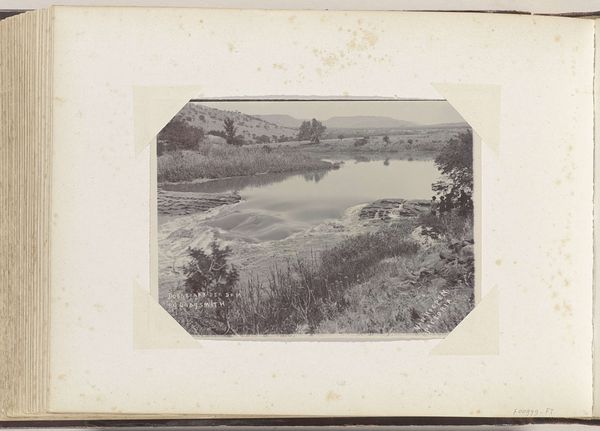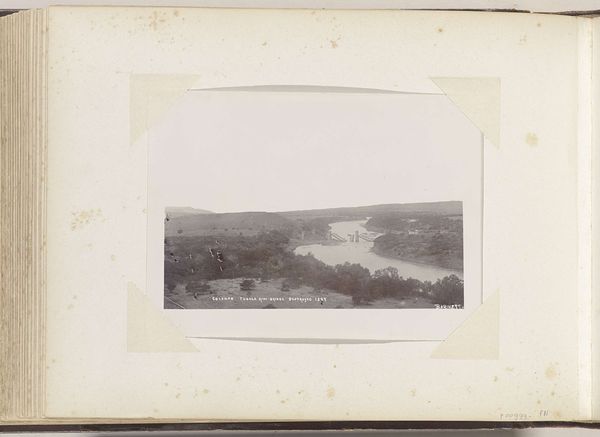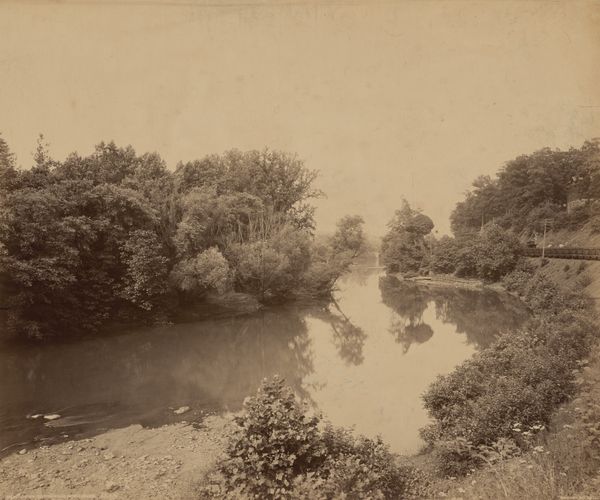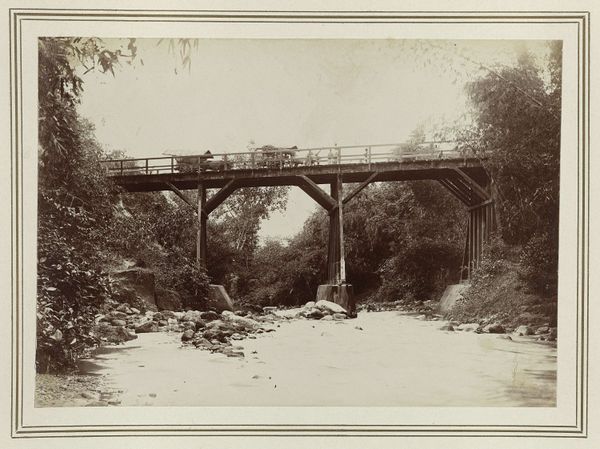
photography
#
landscape
#
river
#
photography
Dimensions: height 212 mm, width 277 mm, height 469 mm, width 558 mm
Copyright: Rijks Museum: Open Domain
Curator: Félix Bonfils gave us this photograph, "View of the Jordan River," sometime between 1867 and 1877. It's a landscape, capturing a tranquil river scene. What strikes you about it? Editor: The overwhelming feeling is stillness. It's the muted sepia tone, perhaps, or the unrippled surface of the water. I’m lulled. It evokes a sense of biblical peace. But what of its historical context? Curator: Bonfils, you see, worked during a period when photography was gaining prominence, but also viewed with suspicion, right? This photo bridges both worlds: part documentary, part constructed narrative. Editor: Absolutely. Remember, landscape imagery of this period wasn’t just about showing a place; it was also about claiming it. The Jordan River is weighted with symbolism and biblical narrative, especially at that time, with increased Western interest in the Holy Land. Curator: Precisely. Notice the angle, straight on, balanced— almost classical in its composition, reinforcing the sense of harmony and control. This control, however, is illusory. Photography, though “objective”, is also selective, and Bonfils’s artistic choices contribute to that specific view of a “holy” space. Editor: Yet, in presenting it so calmly, the photograph reinforces its timelessness and importance. And there’s the issue of access. Photography democratized imagery. To capture an image of this highly important geographical region meant that access to the image and perhaps a perceived sense of ownership became available for anyone to experience without ever traveling there. Curator: So, photography as a new visual vocabulary also transformed existing cultural and spiritual symbols. This image of the Jordan River builds on older traditions while creating new layers of interpretation. What was once purely narrative is becoming spatial, captured, and endlessly reproducible. It shifts how viewers relate to a landscape laden with cultural and religious weight. Editor: A captured icon. The implications of that—commercially and politically—are really something. The picture makes it almost seem as if you were really there. And, also perhaps, it also serves to preserve what might have seemed a vanishing sacred experience. Curator: I agree. I've walked away with something new. An increased respect, and awareness. Editor: Agreed. The quiet simplicity speaks volumes. It allows layers of complex, deeply symbolic imagery to emerge over time.
Comments
No comments
Be the first to comment and join the conversation on the ultimate creative platform.
